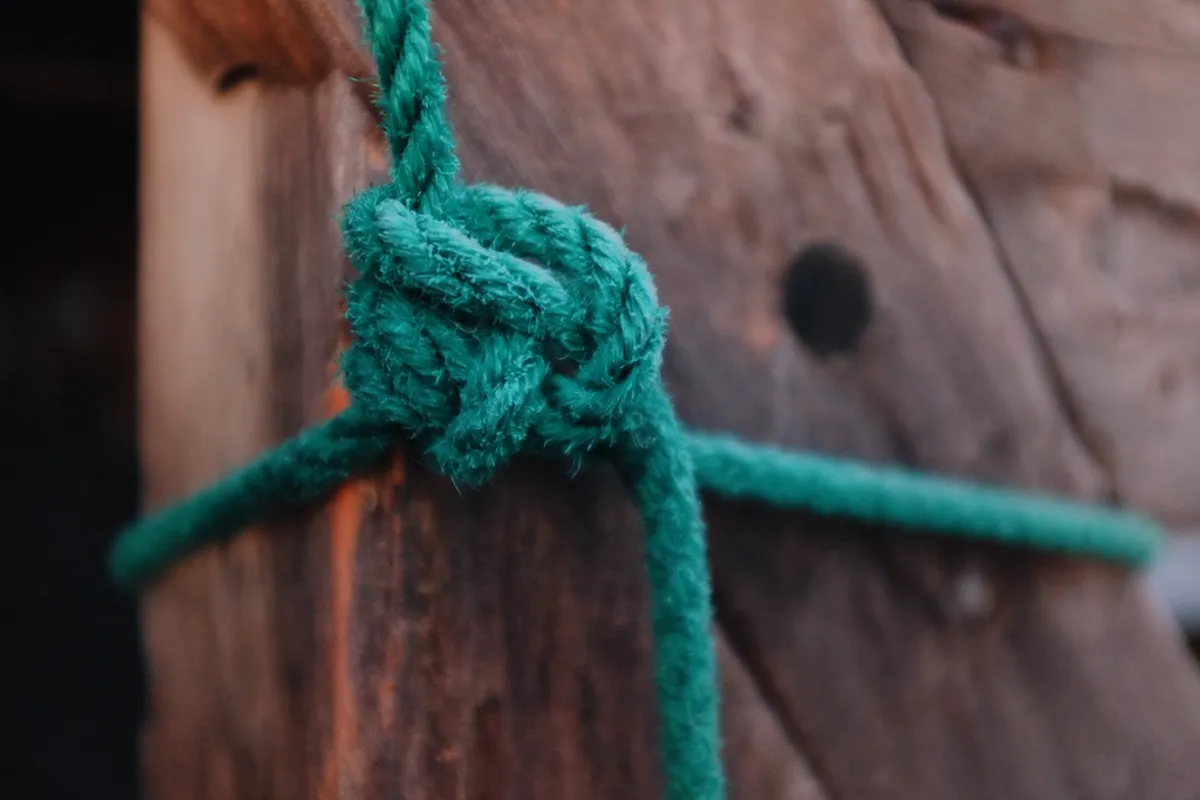Whether you are a beginner or experienced rider, learning knot tying techniques is crucial. This guide shows you how to make strong and secure tying knots. They are useful for tying your horse during competitions, on trails, or during training.
You will learn the key gestures for the safety of your mount. You will also see how to ensure optimal holding of the tie line.

Main Recommendations
- Learn to make basic equestrian knots such as the simple knot, the slip knot, and the bowline knot
- Choose high-quality ropes suitable for horseback riding
- Tighten the tie line properly for better stability
- Secure your horse safely to trees or posts
- Place knots strategically for optimal holding
What is an equestrian tying knot?
An equestrian tying knot is a type of knot designed to tie a horse securely. It allows you to attach the lead rope or tie rope to a fixed point like a tree. This prevents the horse from escaping and ensures the safety of its rider.
It is crucial to know the different tying knots for riders.
Definition and Usefulness
The equestrian tying knot is designed for the secure fastening of a horse. It is essential for securing the tie rope. This prevents the animal from escaping, protecting both the rider and the horse.
Types of Ropes Used
The climbing rope is ideal for a reliable tie line. With a diameter of 8 to 10 mm, it is strong and manageable. A length of 15 to 18 meters allows for adaptation to different tie points.
The elasticity of the climbing rope prevents the horse from getting its feet caught.
Equestrian tying knot: the different knots
There are several types of knots to tie your horse. The simple knot, the slip knot, and the bowline knot are very useful.
The Simple Knot
The simple knot is the easiest for securing the rope. It must be tightened well to prevent the rope from slipping. Using a slip knot distributes the pulling force. Making several knots prevents them from coming undone.
The Slip Knot
The slip knot is perfect for attaching the rope to a fixed point. It prevents the rope from loosening. It is a good alternative to the simple knot, safer and easier to undo.
The Bowline Knot
The bowline knot is ideal for a thin post. It holds well and can be easily undone. It is a simple knot to learn, preventing the rope from slipping or loosening.
Properly Tensioning the Tie Line
To tension the tie line, start by making a loop at the end. Then, wrap the rope around the tree or post. Finally, pass the rope back through the loop. Pulling the rope will multiply the forces thanks to the tree or post. Once tensioned, secure it by wrapping it around itself.
Here are the steps to tension the tie line:
- Make a loop at the end of the rope.
- Wrap the rope around the tree or post.
- Pass the rope back through the loop.
- Pull firmly on the rope to tension it.
- Wrap the rope around itself to secure it tightly.
| Step | Description |
|---|---|
| 1. Loop | Make a loop at the end of the rope. |
| 2. Wrap around the anchor | Wrap the rope around the tree or post. |
| 3. Pass through the loop | Pass the rope back through the loop. |
| 4. Pull firmly | Pull firmly on the rope to tension it. |
| 5. Secure tightly | Wrap the rope around itself to secure it tightly. |
By following these steps, you will be able to properly tension the tie line of your horse. This ensures its safety and comfort.
Tying Your Horse with the Tie Line
When you go out with your horse, it is essential to tie it correctly. This is true whether you are in the forest or in the city. There are several ways to do this.
Securing the Rope to Trees or Posts
In the forest, look for two tall, thick, and well-spaced trees. Secure the tie line at 2 meters above the ground. In the city, use utility poles, planters, or window bars with the necessary permission. In competitions, tie between two trees. If needed, use two trucks.
Miscellaneous
The number of knots depends on the number of horses. You can add a sliding ring so your horse can graze while on the trail. The simple knots are easy to make and undo on a climbing rope. On other ropes, use a small stick wedged to prevent the knot from tightening.
Conclusion
Learning to make a strong equestrian tying knot is crucial for riders. This is true for trails, competitions, or training. The different knots in this guide help to securely tie the horse. They also allow it to move freely.
The French Saddle offers quality products, made in France by artisans. We have what you need for riders, whether you are a beginner or experienced. With us, you will find all the equipment for your horse's safety.
Visit our website to see our products and contact us for more information. Together, let's make horseback riding a safer and more enjoyable sport for you and your animal.
FAQ
What is an equestrian tying knot?
An equestrian tying knot is a type of knot for securely tying a horse. It attaches the lead rope or the tie rope to a fixed point, like a tree. This prevents the horse from escaping and ensures the safety of its rider.
What types of ropes are used for equestrian tying knots?
The climbing rope is ideal for a strong tie. With a diameter of 8 to 10 mm, it is strong and manageable. Its length of 15 to 18 meters adapts to different tie points for multiple horses. The elasticity of the rope prevents the horse from getting its feet caught.
What are the different knots used for tying horses?
The main knots are:
- The simple knot, the most basic for securing the rope at the first tie point.
- The slip knot, very practical for attaching the rope to a fixed point. It allows the rope to slide without loosening.
- The bowline knot, ideal for tying the rope to a thin post. It holds perfectly and can be undone quickly.
How to properly tension the tie line?
To properly tension the tie line, start by making a loop at the end. Then, wrap the rope around the tree or post, and pass it back through the loop. By pulling, the forces are multiplied by the support of the anchor point, thus tensioning the rope. Once tensioned, secure it tightly by wrapping it firmly around itself.
How to tie your horse to the tie line?
In the forest, look for two tall and spaced trees to secure the tie line at 2 meters above the ground. In the city, use utility poles, planters, or window bars with permission. The number of knots depends on the number of horses. A sliding ring between two knots allows the horse to graze while on trails.
RelatedRelated articles



